- Home
- Balogun Ojetade
Steamfunkateers Page 3
Steamfunkateers Read online
Page 3
Regardless, you only get to make one skill check on your turn in an exchange, unless you’re defending against someone else’s action—you can do that as many times as you want.
You can even make defend actions on behalf of others, so long as you fulfill two conditions: it has to be reasonable for you to interpose yourself between the attack and its target, and you have to suffer the effects of any failed checks.
Full Defense
If you want, you can forgo your action for the exchange to concentrate on defense. You don’t get to do anything proactive, but you do get to perform all defend actions for the exchange at a +2d bonus.
If your defense fails, you suffer a condition (see Conditions).
Conceding the Conflict
When all else fails, you can also just give in. Maybe you’re worried that your character will die, or maybe you decide that continuing to fight is just not worth the punishment. Whatever the reason, you can interrupt any action at any time before the roll is made to declare that you concede the conflict. This is very important—once dice hit the table, what happens… happens… unless you Fold, which is a lot like conceding, but can only be used in a conflict, NOT a challenge or a contest.
Concession gives the other person what they wanted from you, or in the case of more than two combatants, removes you as a concern for the opposing side. You’re out of the conflict, period.
But it’s not all bad. You get a point of Vigor for choosing to concede. This point of Vigor may be used once the conflict is over.
Movement
In a conflict, it’s important to track where everyone is relative to one another, which is why we divide the environment where the conflict’s taking place into zones. Where you have zones, you have people trying to move around in them in order to get at one another or at a certain objective.
Normally, it’s no big deal to move from one zone to another—if there’s nothing preventing you from doing so, you can move one zone in addition to your action for the exchange.
If you want to move more than one zone (up to anywhere else on the map), if a situation descriptor suggests that it might be difficult to move freely, or if another character is in your way, then you must make a surmount action using Athletics to move. This counts as your action for the exchange.
GMs, just as with other surmount checks, you’ll set the difficulty. You might use the number of zones the character is moving or the situation descriptors in the way as justification for how high you set passive opposition. If another character is impeding the path, use active opposition and feel free to invoke obstructing situation descriptors in aid of their defense.
If you fail that roll, whatever was impeding you keeps you from moving. If you tie, you get to move, but your opponent takes a temporary advantage of some kind. If you succeed, you move without consequence.
Advantages in a Conflict
Remember that descriptors you create as advantages follow all the rules for situation descriptors—the GM can use them to justify surmount actions, they last until they’re made irrelevant or the scene is over, and in some cases they represent as much a threat to you as an opponent.
When you get the upper hand in a conflict, think about how long you want that descriptor to stick around and whom you want to have access to it. It’s difficult for anyone besides you and your friends to justify using an advantage you stick to a character, but it’s also easier to justify getting rid of it—one surmount action could undo it. It’s harder to justify getting rid of a descriptor on the environment (seriously, who is going to move that Huge Bookcase you just knocked over?), but anyone in the scene could potentially find a reason to take advantage of it.
In terms of options for advantages, the sky’s the limit. Pretty much any situational modifier you can think of can be expressed as an advantage. If you’re stuck for an idea, here are some examples:
Temporary Blinding: Throwing sand or salt in the enemy’s eyes is a classic action staple. This places a Blinded descriptor on a target, which could require them to get rid of the descriptor with a surmount action before doing anything dependent on sight. Blinded might also present opportunities for a snag—so keep in mind that your opponent can take advantage of this to replenish points of Vigor.
Disarming: You knock an opponent’s weapon away, disarming them until they can recover it. The target will need a surmount action to recover their weapon.
Positioning: There are a lot of ways to use advantages to represent positioning, like High Ground or Cornered, which you can invoke to take advantage of that positioning as context demands.
Winded and Other Minor Hurts: Some strikes in a fight are debilitating because they’re painful, rather than because they cause injury. Nerve strikes, groin shots, and a lot of other “dirty fighting” tricks fall into this category. You can use an advantage to represent these, causing your opponent Pain-Blindness or Stunned or whatever, then following up with an attack that exploits the descriptor to do more lasting harm.
Taking Cover: You can use advantages to represent positions of cover and invoke them for your defense. This can be as general as Found Some Cover or as specific as Behind the Big Mahogany Bar.
Altering the Environment: You can use advantages to alter the environment to your benefit, creating barriers to movement by scattering Loose Junk everywhere, or setting things On Fire.
Other Actions in a Conflict
As stated above, you may find yourself in a situation where you want to do something else while your friends are fighting. You might be disarming a death trap, searching for a piece of information, or checking for hidden assailants.
In order to do this, GMs, set the player up with a modified form of challenge. One of the tasks is likely “defend yourself”—in any exchange where someone attacks you or tries to get the upper hand on you, you must defend successfully in order to be able to take one of the other actions in the challenge. So long as no one has successfully attacked you or stuck an advantage on you, you can use your action to roll the dice for one of the challenge goals.
Ending a Conflict
Under most circumstances, when all of the members of one side have either conceded the conflict or have been incapacitated or killed, the conflict is over.
GMs, once you know a conflict has definitively ended, you can hand out all the Vigor earned. Players, take the Vigor for when your descriptors were invoked against you and make a note of whatever consequences you suffered in the fight.
Teamwork
Characters can help each other out on actions. There are two versions of helping in Steamfunkateers—combining skills, for when you are all putting the same kind of effort into an action (like using Physique together to push over a crumbling wall), and stacking advantages, for when the group is setting a single person up to do well (like causing multiple distractions so one person can use Stealth to get into a fort).
When you combine skills, figure out who has the highest skill level among the participants. Each other participant who has at least 1 rank in the same skill adds a +1d to the highest person’s dice pool, and then only the lead character rolls. So if you have three helpers and you’re the highest, you receive a +3d bonus, so, if you had a Skill rank of 5, normally you would be roll 5 dice. With teamwork, however, instead of rolling 5 dice, you will roll 8.
If you fail a check using combined skills, all of the participants share in the potential costs—whatever complication affects one character affects all of them, or everyone has to take conditions. Alternatively, you can impose a cost that affects all the characters the same.
When you stack advantages, each person takes a Get the Upper Hand action as usual, and gives whatever free invocations they get to a single character. Remember that multiple free invocations from the same descriptor can stack.
Once again, you know the conflict is over when everyone on one of the sides has conceded or been incapacitated or killed.
Time and Distance
Turns, Rounds & Scenes
>
Scenes
A scene is a unit of game time lasting anywhere from a few minutes to a half hour or more, during which the players try to achieve some goal or otherwise accomplish something significant in a scenario.
A scene in Steamfunkateers is like a scene in a movie, a television show, or a novel—the main characters do stuff in continuous time, usually all in the same space. Once the action shifts to a new goal, moves to a new place related to that goal, or jumps in time, you’re in the next scene.
Rounds and Turns
A round is a unit of play in which every character has had a chance to do something.
During a round, each character involved takes a turn—a character’s opportunity to do something. A character has an allotment of actions, used during that character’s turn. Players decide what their characters do on their turns, while the GM handles each NPC’s turn.
So, time breaks down in Steamfunkateers like this: Several turns make up a round; several rounds make up a scene; several scenes make up a gaming session; and several gaming sessions are linked together into an overall adventure. Adventures can be stand-alone, or they can be linked together to form a sweeping campaign.
A gaming session is like a chapter in a novel; an adventure is comparable to a novel; and a campaign is comparable to a novel series.
Zones
GMs, if your conflict takes place over a large area, you may want to break it down into zones for easier reference.
A zone is an abstract representation of physical space. The best definition of a zone is that it’s close enough that you can interact directly with someone (in other words, walk up to and punch them in the face).
Generally speaking, a conflict should rarely involve more than a handful of zones. Two to four is probably sufficient, save for really big conflicts. Zones should give a tactile sense of the environment,.
If you can describe the area as bigger than a house, you can probably divide it into two or more zones—think of a cathedral or a shopping center parking lot.
If it’s separated by stairs, a ladder, a fence, or a wall, it could be divided zones, like two floors of a house.
“Above X” and “below X” can be different zones, especially if moving between them takes some doing—think of the airspace around some-thing large, like a blimp.
As a general rule: your opponent must be in the same zone for close-quarters battle (fists, knives, clubs, swords); your opponent must be in the adjacent zone for melee combat with larger weapons (spears, whips, long-staffs) or short ranged missile weapons (shotguns, pistols), and two or more zones for long-range missile weapons (long bow, rifle) and the like.
When you’re setting up your zones, note any situation descriptors that could make moving between those zones problematic. They’ll be important later, when people want to move from zone to zone. If that means you need more situation descriptors, add them.
CHARACTER CREATION
The moment you sit down to make the game and characters, you’re playing Steamfunkateers. This style of character creation does three things to reinforce that. First, character creation tells part of the characters’ stories, just like any other game session does. Characters that really come alive have histories of their own and with each other. This establishes where they’ve been, what they’ve done, and why they continue to act against the issues they face, together or in opposition. There’s an ongoing story you’re now stepping into—it’s just that it hasn’t happened yet.
Second, it sets the stage for the next part of the story. Each arc of a story sets up the next, so that they flow into one another in a natural evolution.
Character creation needs to set up the first story arc.
Third, character creation in Steamfunkateers is collaborative. As with game creation, character creation is best done as a group activity. Doing all of this together builds a strong foundation of communication between the players and GM, and this process has a number of ways to establish connections between the characters and the setting.
Archetypes
We have built, for your enjoyment, a system without limits. While there are some cool Archetypes, they don’t stagnate or limit your imagination at all!
As you read earlier, there are several character archetypes to choose from, each representing a different skill-set and sphere of knowledge.
Each Archetype has three skills intrinsic to it. These skills start at Rank 1. The ranks of these skills can be increased—and/or new ones purchased—with points of Vigor. See the Skills section for more on Vigor, skills and the rules for their use.
Air Pirate: One of the quintessential Steamfunk characters. Air pirates are bad, bold, and armed to the teeth. They typically operate as pirates in the air and travel by aircraft, as opposed to the more traditional pirates on the high seas, who travel by ship. However, just as traditional seafaring pirates target sailing ships, air pirates capture and plunder aircraft and other targets for cargo, loot and occasionally they steal an entire aircraft, sometimes killing the crewmembers in the process. Air pirates are also often smugglers, transporting objects, substances, information or people—mainly enslaved Africans seeking freedom.
Intrinsic Skills: Drive; Athletics; Contacts
Adventurer/Explorer: Their reason for being is to boldly go where no one has gone before; to experience new things; and to discover new places. Adventurers don't just find excitement—they specifically seek it out. Explorers feel compelled to explore strange new worlds; to seek out new life and new civilizations.
Intrinsic Skills: Athletics; Scholarship; Spot
Aviator: Whether military, or a rogue; whether they’re flying a bi-plane, a zeppelin, or a steam-powered space ship; they are tough, brave, and even a bit gallant, especially in contrast to Air Pirates. Some aviators are aggressive types who favor in-your-face frontal assaults, raining blows on their enemy to keep them off-balance. Others are cunning, devious pilots who eschew easy-to-evade frontal attacks in favor of taking potshots from the rear or other blind spots. While others aviators are defensive players, who manage to stay calm, cool and collected, continually dodging and deflecting enemy attacks.
Intrinsic Skills: Drive; Marksman; Rapport
Dandy/Femme Fatale: They use their wiles and charms to get what they want, sometimes at the expense of others. Dandies and Femmes Fatales pride themselves on being cool and laid-back with their own unique flair. The Dandy is also typically a hedonist who highly values comfort and living the good life. They're often campy, vain, and in many cases pretty, but they're also incredibly effective at what they do. They may have combat skills, seduction ability, or may simply be Chess-masters skilled in manipulating others. Femmes Fatales are often downright heroic, using their sensuality and sexiness as a bargaining chip, a distraction, or as an effective tool for espionage and manipulation.
Intrinsic Skills: Converse; Deceive; Empathy
Hunter/Fighter: Monster hunters are all about firepower and skill in combat. They stay armed with stakes, silver bullets, and strange, arcane-looking weaponry. Military personnel might be a highly disciplined and well-trained soldier or sailor, or maybe even a deserter, who refused to fight any longer for a corrupt and unjust nation. A Soldier is often a Fighter that uses their skills and training to get a job done or a cause fulfilled, with combat simply a grim task to get there. They typically rely on a more structured chain of command, following orders and fulfilling missions or campaign goals. A Warrior is a Fighter that uses their martial spirit, training and personal philosophy to fight, typically for honor and glory. Warriors typically look down upon those that don't see combat or strength as a core virtue. A Hunter is a Fighter that has dedicated their life to killing monsters, supernatural or otherwise.
Intrinsic Skills: Marksman or Melee (choose one); Stealth; Spot
Mad Scientist/Inventor: Another quintessential Steamfunk character, they embody the steam in steampunk, discovering new things, solving problems, and occasionally blowing things up. These characte
rs use science and technology to save—or ruin—the day. They're defined mostly by being technically proficient with a sense of adventure and curiosity. These characters are often found doing research, if they're not already a walking encyclopedia, or analyzing enemy weaknesses. They are more than capable of planning and directing missions, but might fall into over-analysis and prattle.
Intrinsic Skills: Investigate; Scholarship; Spot
Magician/Occultist: The conjure-man; the witch; the illusionist—the great men and women whose lives are bolstered, or broken, by the arts of legerdemain, divination and prestidigitation. The virtuosos of voodoo, stage magic, fortune-telling and mesmerism. These characters can be an aristocrat from Africa that also happens to be some sort of alchemist, wizard or what have you, a magician that uses nimble fingers, hidden devices and deliberate misdirection, or a detective that investigates paranormal mysteries.
Intrinsic Skills: Converse; Empathy; Will or Perform (choose one)
Tinkerer: A bit of a twist on the Scientist/Inventor. Where the Inventor creates things from scratch, the tinkerer improves on things, often on the fly, or perhaps just tries to get things to work; making do with what they have. It doesn't matter if this character has never seen it before, has never seen anything like it before, is unfamiliar with its working principles or doesn't even know the stuff it is made out of; the Tinkerer will be able to reverse engineer it. Tinkerers have great skill with technology and engineering. They build and repair devices and have an innate higher reasoning capacity than normal humans.
Intrinsic Skills: Scholarship; Spot; Tinkering

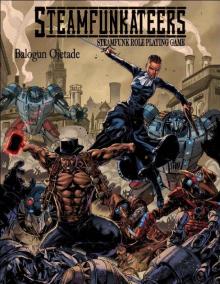 Steamfunkateers
Steamfunkateers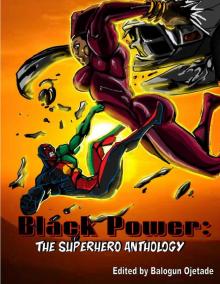 Black Power- The Superhero Anthology
Black Power- The Superhero Anthology Gunsmoke Blues
Gunsmoke Blues The Haunting of the House of Crum
The Haunting of the House of Crum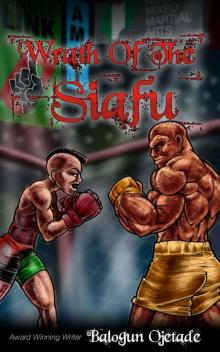 Wrath of the Siafu- A SIngle Link
Wrath of the Siafu- A SIngle Link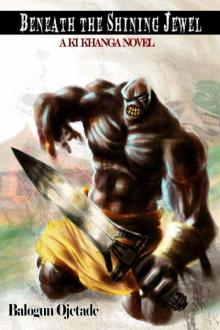 Beneath the Shining Jewel
Beneath the Shining Jewel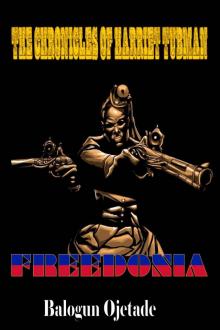 The Chronicles of Harriet Tubman- Freedonia
The Chronicles of Harriet Tubman- Freedonia A Haunting in the SWATS (The Savannah Swan Files Book 1)
A Haunting in the SWATS (The Savannah Swan Files Book 1)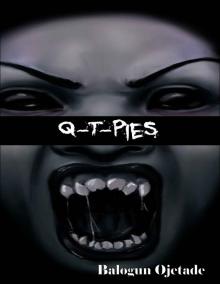 Q-T-Pies (The Savannah Swan Files Book 0)
Q-T-Pies (The Savannah Swan Files Book 0)